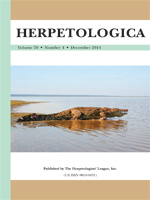We describe the morphology of the digestive tube of Podocnemis expansa, Podocnemis unifilis, Podocnemis sextuberculata, Podocnemis erythrocephala, and Peltocephalus dumerilianus. The esophagus in these species has two distinct regions: the anterior region has esophageal papillae and the posterior has longitudinal folds. Esophageal glands are absent but goblet cells occur in the mucosa of esophagus. The stomach in P. expansa, P. unifilis, and P. erythrocephala has two regions: the anterior region consists of cardiac and fundic regions and is without glands; the more-posterior pyloric region contains gastric glands that extend into the lamina propria. In P. sextuberculata, the stomach is a J-shape, and in Peltocephalus dumerilianus the stomach is a C-shape with a larger curvature to the left side. The stomachs of these two species have numerous gastric glands in all regions. The small intestine (SI) in all species is a long, coiled tube and has folds and villi that appear different in each region. In P. expansa, P. unifilis, and P. erythrocephala, there is a dilatation in the anterior region of large intestine (LI), followed by a straight and tubular region of smaller diameter. In P. sextuberculata and Peltocephalus dumerilianus, the dilatation is absent and the LI is tubular and of uniform diameter along its entire length. The LI has a larger quantity of goblet cells than the SI. The digestive tube of the turtles in the family Podocnemididae demonstrates differences in the morphology between species, and these differences could be related to the diet of each species.
Foi descrito a tubo digestório de Podocnemis expansa, P. unifilis, P. erythrocephala e Peltocephalus dumerilianus. O esôfago das espécies analisadas apresenta duas regiões distintas: a região anterior com presença de papilas esofágicas e a região posterior com pregas longitudinais. Glândulas esofágicas foram ausentes, mas células caliciformes ocorreram na mucosa do esôfago. O estômago em P. expansa, P. unifilis, e P. erythrocephala apresenta duas regiões: a região anterior que é formada pelas regiões cárdica e fúndica e é ausente de glândulas; e a região posterior, considerada a região pilórica, com glândulas gástricas em sua lâmina própria. Em P. sextuberculata o estômago teve forma de “J” e em Peltocephalus o estômago tem formato de “C” com a curvatura maior do lado esquerdo. O estômago dessas espécies apresenta numerosas glândulas gástricas em todas as regiões. O intestino delgado em todas as espécies é um tubo longo e enovelado e com pregas e vilosidades que se diferenciam em cada região. O Em P. expansa, P. unifilis, e P. erythrocephala, existe uma dilatação na região anterior do intestino grosso (IG), seguindo de uma região retilínea e tubular de menor diâmetro. Em P. sextuberculata e Peltocephalus, a dilatação é ausente, o IG segue como órgão tubular de di





